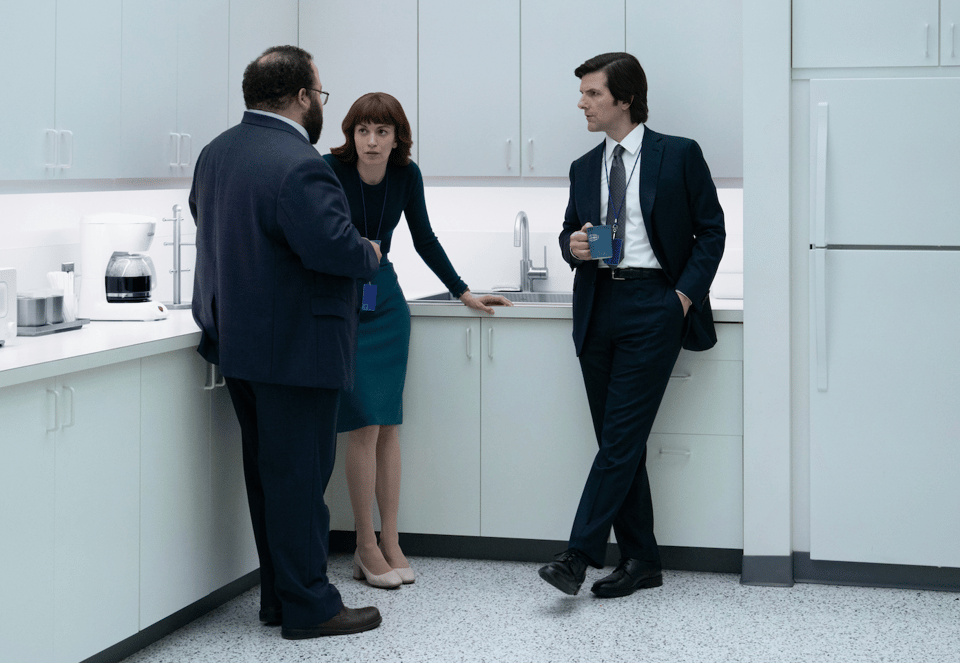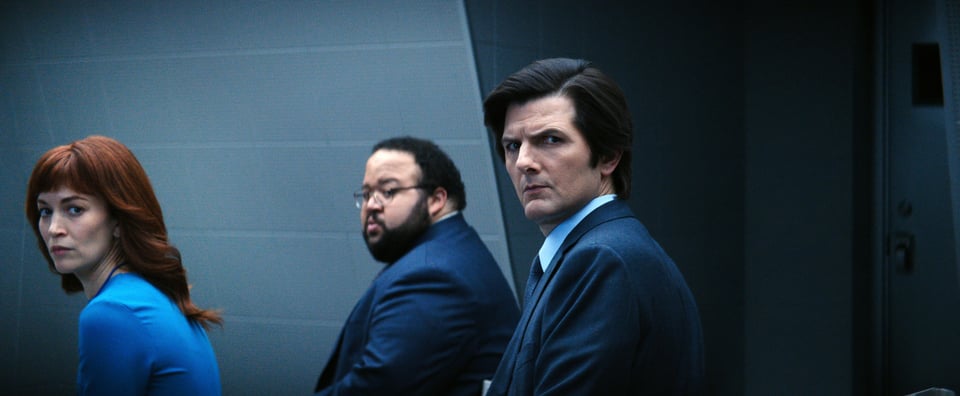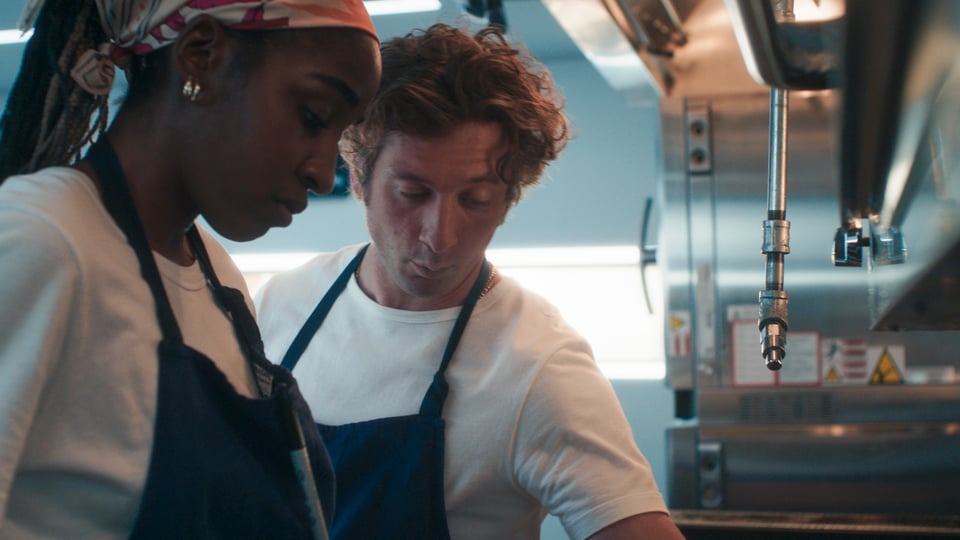Is “Severance” a hangout show?
Why aren't we seeing more friendships depicted on screen, and is that just reflecting the atrophy of our social lives in the real world?

Instead of handwringing about the so-called loneliness epidemic among men, there’s a more interesting conversation to be had about what close bonds and friendship for anyone even look like right now. Especially through the prism of TV.
As a recent piece from Yahoo entertainment writer Kelsey Weekman notes: “Nobody wants to hangout on TV anymore”
She defines hangout shows as those centered on friends who spend most of their time “lounging around, talking about their lives, sharing the details of their recent bad dates, complaining about unruly bosses and bonding over the latest antics of weird neighbors.”
All kinds of older titles come to mind: “Living Single” (and “Friends,” the show that copied “Living Single’s” template), “Seinfeld,” “Cheers,” “The Big Bang Theory.” You could argue the best thing about the original run of “Sex and the City” were the hangout scenes that elevated the show beyond a collection of dating hijinks. Does “Abbott Elementary” qualify as a hangout show despite its workplace setting?
If so, it’s an outlier right now, because as Wheekman points out, “the most prestigious and talked-about shows these days [are] … solving problems at work (‘Severance,’ ‘The Studio’), scrambling to save lives (‘The Pitt,’ Grey’s ‘Anatomy’), investigating crimes (‘Only Murders in the Building,’ ‘Slow Horses’) or getting into trouble on vacation (‘The White Lotus’).”
As a genre, why has the hangout show all but disappeared? Weekman talks with a variety of folks who weigh in with theories and this one caught my eye:
According to the professor Chris Hite, the reason we’re not seeing modern variations of classic “hangout” shows is because we — I’m interpreting “we” to mean not just the audience but also people who make TV — aren’t hanging out like that anymore even in real life. And here’s why:
“the No. 1 condition that made ‘hanging out’ possible in those shows — economy — no longer provides the proper conditions for it to occur” including “affordability of travel, availability of employment options, live entertainment [and] affordable coffee.”
He’s right. The crappy financial vice that so many of us find ourselves in isn’t conducive to hanging out. Squint and maybe you remember a time when people used to go to the movies on whim, and you could do it for under $10.
Hanging out doesn’t have to cost money, but you still need the time to hang out. And you need the energy to hang out. Have we retreated so entirely into our homes that we don’t have space for, or interest in, anything else? Have we become closed off thanks to circumstances beyond our control? If you find yourself trapped in a daily existence of “live to work” — survive, really — vs. “work to live” … well, hanging out probably gets lost along the way.
If you’re still concerned about Covid — and you should be, even though talking about it makes a lot of people uncomfortable and many news outlets only report on it occasionally anymore — that’s going to affect opportunities to hang out as well, especially when the weather outside is miserable.
You also need friends. Which sounds obvious. But I think collectively we're fumbling opportunities to make new friends, especially those who live in relatively close (aka hangout) proximity. If it’s inconvenient to meet up, fatigue (both physical and mental) probably wins out. We're all dealing with a lot right now.
Each year, the Bureau of Labor Statistics publishes the yearly results of its American Time Use Survey, which measures the time people spend doing various activities including paid work, childcare, volunteering, and socializing. Surprise, socializing is decreasing! Especially among teens and people in their early-to-mid-20s; fewer are going to (or hosting) parties. When compared with 2003 numbers, it’s a big drop, down 70%.
The journalist Derek Thompson calls our present moment “The Anti-Social Century” in a piece he wrote for The Atlantic, and in a recent newsletter he noted that “At a time of surging anxiety and mental distress, Americans spend more time alone today than in any period in recorded history. Face-to-face socializing has plummeted in the last two decades by about 20%.”
It’s fitting, then, that hangout shows aren’t exactly a staple.
They were always peddling a fantasy anyway. How many of us have a cozy neighborhood haunt like the one on “Cheers”? Or live across the hall from people with whom we want to spend our free time? The setup on both “Living Single” and “Friends” was always closer to that of a college dorm than how most of us live as adults.
But I think it matters that we’re not seeing new shows premised on the hangout. TV and film don't just reflect our lives back to us, but also help shape how we think about the world and what we value. So a generalized de-emphasis on what friendship looks like feels … not great.
No one is hanging out
The novelist Brandon Taylor recently made a similar observation about new American novels. “Our characters and, by extension, our novels are so vastly lonely. No one is hanging out! No one is really engaging in friendship.”
A simulacrum of hanging out is showing up on TV, but maybe not in the formats we’ve come to expect. Is “The Office” a hangout show? And if so, is that a stealth reason it’s had a resurgence on streaming, long after its original run on broadcast television?
Let’s take this idea in a weirder direction: Is “Severance” a hangout show?
I have some pointed issues with the series — I think it’s maxed out its storytelling and thematic potential — but I wonder if so many people respond to it because maybe it's scratching that hangout itch, albeit in a demented way.
In their “real” lives outside of work, they struggle to make meaningful connections with other people. But as innies trapped forever in the corporate hell of Lumon Industries, suddenly that part of themselves has been (re)activated. At the outset of Season 2, when Lumon is in damage control mode after the group’s semi-successful attempt to expose their living nightmare, they are split up and reassigned to new pods. But Adam Scott’s character is adamant that he will not be placated until the team is reassembled. That’s because they are his people; not just co-workers but friends, aka the individuals he wants to hang out with.
It’s almost as if the show is (intentionally or not) validating the complaints of anyone who dislikes working from home because the office is where they get their hang out fix.

On BlueSky, Time magazine TV critic Judy Berman had another theory:
I also wonder if this is what's driving the mania for Bravo-style soaps and even shows like “Love Island.” People starving for real-life social context are finding it in the most artificial places.
Now that’s interesting.
I don’t know if we’re meant to actually like anyone on the various Bravo franchises, but their scenes together really are just manufactured moments of hanging out. And apparently “Love Island” is one of the few places you’ll see friendship among men being depicted with any sort of regularity.
Reality TV is populated with people who think through all the angles and it’s a genre juiced for conflict. Is that influencing (even subconsciously) ideas about what friendship should look like in real life?
Join or die
The documentary “Join or Die” (on Netflix, you can read my review here) explores the theories of social scientist Robert Putnam, who is author of the 2000 non-fiction book “Bowling Alone: The Collapse and Revival of American Community.” He says that clubs — book clubs, running clubs, whatever — create a social cohesion necessary for democracy itself to function.
That’s because communal activities create bonds. And those bonds have value beyond the immediate satisfaction of just doing things together. It creates a sense of mutual obligation.
But this gets back to hangout culture, because clubs provide the structure of scheduled meet-ups. I wonder if this external scaffolding does just enough work to make hanging out that much easier and therefore more common.
Reliable friendships can create a sense of stability in an unstable world. Would seeing that play out in fictional contexts with more frequency propel us into making the extra effort in real life?
The film critic Alisha Mughal wrote a piece about the ways friendship is portrayed in recent films, noting that too often, on screen at least, "the only meaningful union two people can forge is a sexual, romantic one.”
That made me think of FX’s "The Bear,” which is the rare show that hasn’t given into that impulse — to its benefit — even though plenty of viewers would prefer to see Carmy and Sydney breach their platonic status quo.

Maybe from the point of view of a writer or studio executive, hooking up is sexier than hanging out. But it’s not the only way to meaningfully connect with another person. Thinking through the nuances and complexity of what makes a friendship work — and what can make it challenging but also so fun — is worthwhile narrative territory as well. Someone mentioned “Platonic,” the Rose Byrne-Seth Rogen comedy on Apple TV+, as an example of a series that is doing this. It’s not a show I like, but I do appreciate that it exists and centers on a friendship between a straight man and a straight woman that isn’t predicated on unresolved sexual tension.
It’s OK to yearn for the ease and comfort and fizzy thrill of drop-ins with people who enjoy our company and vice versa. We should have more of that, on our screens and in our real lives as well.